Civilization VI hands-on – don’t judge a game by its promo screens
Is it crazy to travel halfway across the world just to play a game that will be released this October for a mere hour? Perhaps. The question is: was it worth it?
Fans of Civilization like to joke that every new game in the franchise only becomes really good after all the expansions are released. It’s hard to deny the truth of this statement. The core version of Sid Meier’s Civilization V was indeed skimpy as compared to the previous parts. It took two major expansions and a flock of smaller DLCs to make it a really excellent game that continues to occupy Steam’s top 10 popular games chart and has gathered an enormous community of people engaging if fierce arguments about the ultimate strategy. In the meantime, somewhat out of the blue, the next Civilization was announced, and it’s due this fall. I’ve had the opportunity to try it out.
Civilization’s new clothes
In 1991 Canadian Sid Meier designed a game that started one of the best and most popular series in the world of virtual entertainment – Civilization. 25 years of history is a pretty big deal, and although Meier himself doesn’t play a huge part in creating new games in the franchise anymore, the expectations aren’t any smaller.
The version of the game that I was able to test was limited to 60 turns. It’s obviously not enough to get the full image of what the new Civilization is going to be, and it was a pretty early build of the game, too, plagued with all the shortcomings characteristic of this phase. Despite all that, however, after just one turn I was already grinning, and that enthusiasm stayed with me until the end of the session.
One of the participants of the event made a pretty accurate remark: “It’s Civilization V, only they’ve changed everything”. At first glance, Civilization VI looks just like its predecessor. Yet, it doesn’t take that much time to see how many elements were completely overhauled. You might have read about those changes in our previous article about Civilization VI. But to read about those changes and to actually experience them is a whole different story, however cliché this might sound.
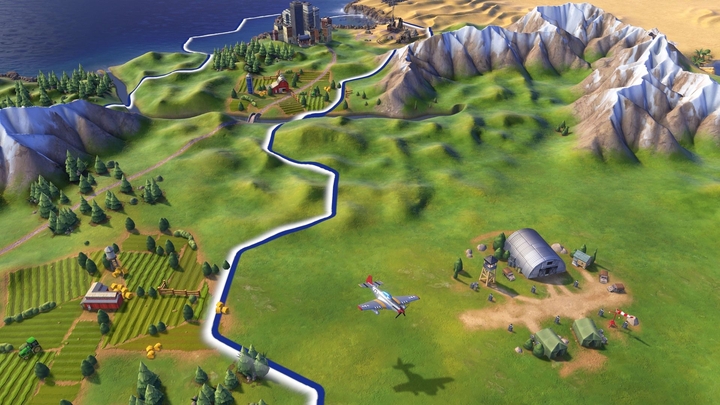
Let’s begin with the most controversial issue, which made many Civilization fans frown – the change of the visual style to more cartoon-like esthetics, looking a bit like upgraded Godus. I myself was among the malcontents. Now, I have to admit that all this looks really good. Sure, the game is now more colorful, but at the same time more legible. Virtually all models, whether buildings or units, were meticulously designed. This eliminates the issue of Civilization V where – especially during later stages – buildings, upgrades and troops were blending into indistinct gray pulp. Since the new part changed its look, that issue is likely to be eliminated.
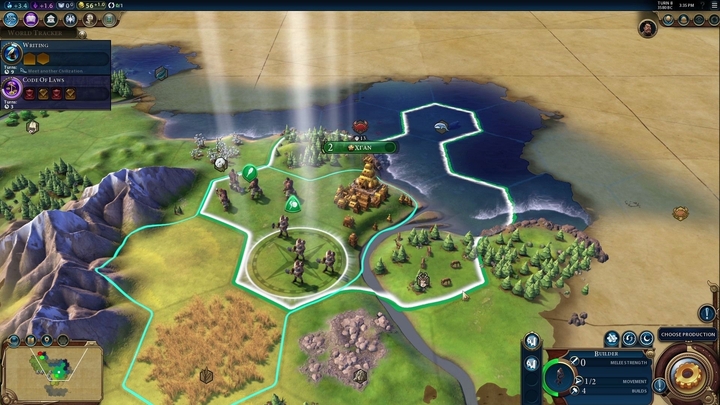
Upgrades of towns, i.e. quarries, plantations or hunters’ camps, are indeed distinguishable elements of the map, even after zooming far out. Civilization VI will probably be the most legible game in the series. If you zoom close in, the game looks really detailed. When we spoke with Dennis Shirk, one of the game’s designers, he talked a lot about this legibility: “If you took the military approach, the things that lay close to a city on the map had no real significance. Now, you will be able to easily spot a scientific campus, since the library, the science lab and the university all have blue markings, matching the theme-color of science (...). Each branch of development received its own color, so further into the game you’ll be able to clearly see what happens on the map”. The animations also deserve praise – they look much more fluent and richer than their older counterparts. My concerns about the aesthetics diminished the moment I saw how the fog of war was handled. It now looks like an old map, which unravels as we travel to further reaches of the world. It’s only a small detail, but it’s thanks to such – seemingly insignificant – tidbits that I felt absolutely enchanted by the new look of Civilization, more and more with each turn.
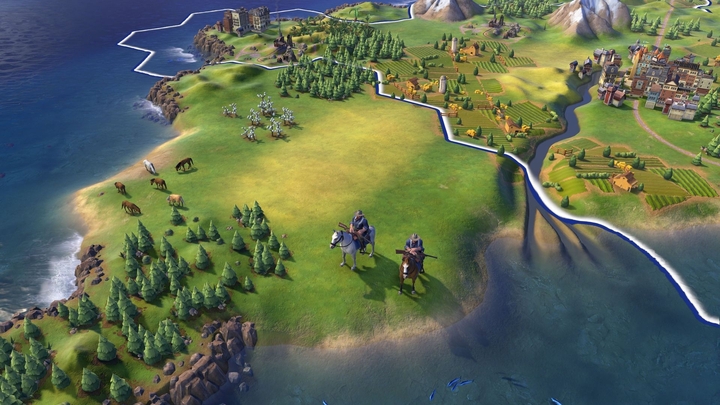
The music has undergone an evolution too. During the first ages, only simple tunes arranged for a couple of instruments accompany the game. Along with the development of our empire, the melodies become more epic and orchestral. When we encounter another civilization, notes from its theme will be woven into the music we hear. Thanks to such inventions, we are probably in for the best-sounding Civilization ever!
“Eureka!”
Still, everyone knows that graphics and music will never make up for any serious shortcomings in the gameplay. There are two elements which made the Civilization series great: the ability to create your own empire and to pursue victory by taking different paths. As I’ve said it the beginning, the core version of the previous installment was severely stripped down of some interesting elements. The devs learned their lesson, and are not going to depend on a DLC to fix their game. All the features of Civilization V and its expansions will be included in this game by default. Hence, we’ll have access to religion, archeology, culture, ideology, and so on from the beginning.
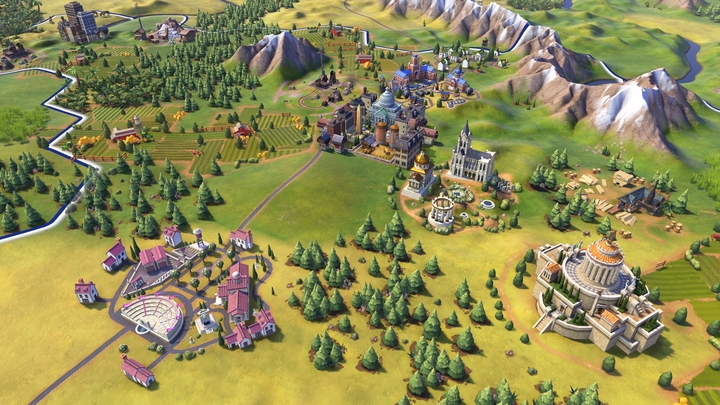
After all, who’s to say (except the fans, of course) that the devs couldn’t just take everything from the previous game, then boost the graphics a bit and call it a day? The game would certainly sell; fortunately, that wasn’t the case. The changes are really interesting, and they add a whole new dimension to the gameplay. The promise to make the game accessible to new players and cater to the veterans at the same time may indeed come true. The seasoned fans of the series will certainly feel at home, but they will also have to discover many new features and get acquainted with them.
What are we exactly talking about? Expanding the cities looks pretty much the same on the surface; even the production menu looks familiar. But, as we soon find out, here awaits the first new feature: the slingers. They used to be an exclusive Inca unit, but now are available for everyone right from the beginning. Such a unit introduces new strategic solutions during the initial stage of the game, being especially useful when dealing with barbarians. I also had an impression that the camps of hostile savages are now harder to conquer and the variety of their soldiers is greater.
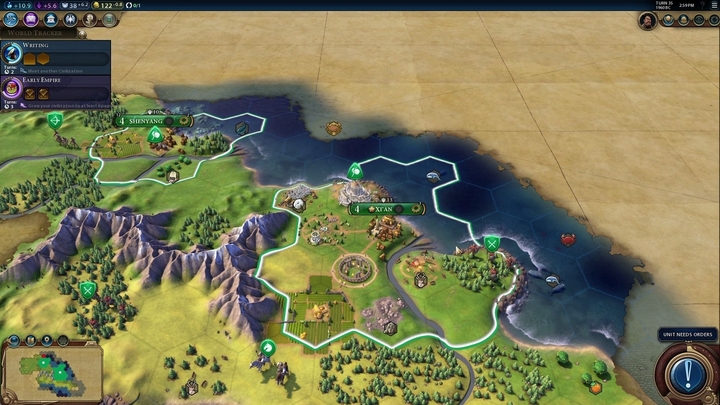
The beginning is obviously about exploring the map and developing the capital in the fastest possible way. While uncovering the world, we can find ruins, and – surprise, surprise – friendly villages. Both have pretty much the same function. During a small reconnaissance, I encountered a new piece of mechanics for the first time. Remember Archimedes running around the streets of Syracuse naked after his scientific discovery? He was yelling “Eureka!” – and that’s the name of one of the innovations in Civilization VI. The principle is that everything we do, and the environment where we do things, has great impact on specific “boosts” that our civilization receives. For example, discovering a city near a seashore will grant bonuses for maritime discoveries. Each technology we discover has that kind of bonus, which can be obtained by completing a miniquest of sorts. It works great and forces the player to pay even more attention to what research they are currently running. Looking for technology that will enable you to produce archers? Try eliminating a unit with slingers. Need to learn about iron processing? Generate three units of spearmen. Those “boosters” make the game even more captivating, and require much thinking from the player.

It’s all about culture
On the other hand, the amount of technologies available to be discovered by science points has been slightly decreased as compared to Civilization V, so the second tree comes to play – the civilization tree. It pretty much works like the technology tree, but subsequent thresholds can be reached with culture points, so it’s a remodeled ideology tree from Civilization V. The reason for adding a new category of research has been explained by Dennis Shirk of Firaxis: “The players who focused on science had an advantage over those who focused on constructing or culture. The ‘scientists’ always reached military superiority sooner than those who searched for cultural or religious advancement. Currently, those who chose the latter paths will be able to reach new epochs by unlocking new kinds of governments or ideologies. You can become stronger by representing the people. The player who focused on science may acquire tanks faster, but I could be paying half as much for my army, thanks to certain directives or be able to build my army twice as fast. So I can be less advanced in terms of technology, but my army will be twice as big, and still cheaper to maintain.”
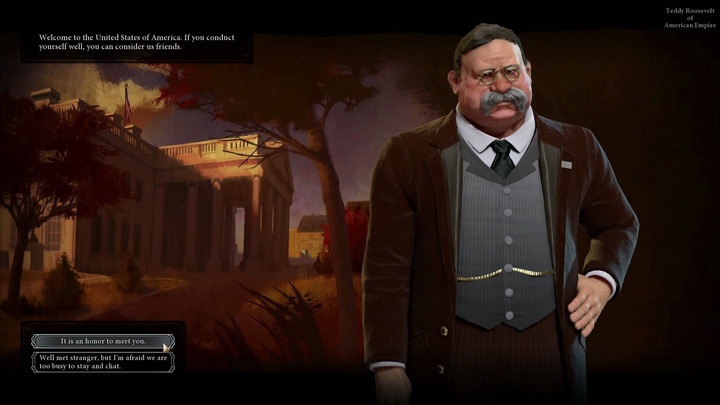
Reaching new discoveries on the civilization tree will give us cards that can be placed is special slots. The cards come in three varieties: economic, diplomatic and military. Specific ideologies, as for example authoritarianism, introduce different combinations of those slots – e.g., two economic, one military and one diplomatic. This renders the management of our civilization more flexible, and – again – compels us to give more thought to the game. Since changing those cards requires a payment, we need to make sure we know exactly what we need at a given moment – compared to the previous installment, it’s a step towards a more diversified gameplay.

“I see a beautiful city...”
The city development has also been updated. Apart from traditional upgrades such as farms, etc., we can also build districts. Thanks to that, the metropolises aren’t confined to just one tile. Different buildings can be raised in those districts; economic, trading, or scientific. Their localization in a city will have a lot of significance: a trading district built in a harbor city will provide bonuses for trading routes; a scientific district will increase the income of science points. “Great people” also make a comeback, and they are associated with the districts as well. During the game, a great scientist emerged from my city. I was able to use him only within the dedicated district – he provided bonuses for three random technologies.

Of course, developing the city requires workers – their characteristics have also been modified. Basic upgrades such as a farm or hunters’ camp are constructed immediately, but there’s obviously a catch – each unit has four ‘charges’ that can be used to introduce upgrades; after depleting them, the unit disappears. Again, this forces us to make sure that we make optimal use of our resources. The districts managed from the city level, however, take several turns to be built. Those districts will be the foundation of metropolis’ specialization – when establishing them, we have to pay even more attention to the surroundings. Before deciding on a certain specialization, we first have to consider not only the luxury goods in the area, but also elements of the environment such as mountains, rivers, deserts, deposits of stone, etc. which will be much more important than they used to be. Unfortunately, I wasn’t able to fully examine this, since the second city that I established only made it to the stage of transitioning into the commercial center of my country. Building the World Wonders has also become more challenging. First of all, they require a specific tile within the boundaries of a city, and second, there are some conditions which have to be met. The pyramids can only be build in the desert, and Stonehenge must lie close to deposits of stone.
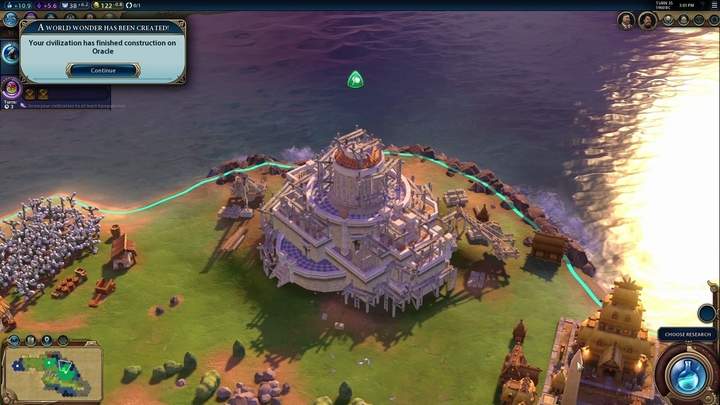
New world order
The borders of our civilization expand, our scouts go deeper into the continent, and at some point, we ought to encounter another powerful civilization. Then, we must engage in diplomacy, which has also been altered. The first thing that draws our attention is the cinematic quality of the animations and aesthetics of the leaders. The new Civilization aims at rendering the changes that occurred in global diplomacy over the centuries as faithfully as possible. “During the ancient times, war was part of people’s everyday life”, says Dennis Shirk. “As times have passed, however, the nations became more civilized, which meant they needed increasingly serious reasons for waging wars. If you declare war for no apparent reason, it will affect you relations with other civilizations. Over time, this becomes increasingly important; the further into the game you are, the harder it is to start a war. That’s just one of the examples of how diplomacy works.”
We don’t know how many nations made it into the final version of the game. When I played, there were only four of them: China (played by the participants of the event), United States, Egypt, and Japan. Unfortunately, Dennis Shirk couldn’t share the number of playable nations that will be available upon release.
This solution isn’t entirely new to the franchise, but it’s supposed to be more important than ever. Naturally, due to time restrictions, I had no way to see this in play out in the game. I did notice some other changes, however. For instance, we now have access to hints about what can improve our relations with other nations, and what will deteriorate them. I’ve also heard something about “conduct” of individual nations and their leaders: everyone has their unique treats. Theodore Roosevelt, for example, is a rather peaceful leader, so he’ll be really angry if you start a war on his continent. There’s supposed to be a lot of such details. The relations with city-states were also changed – there are a lot more quests which can be completed in exchange for influence, and they’re more diversified.
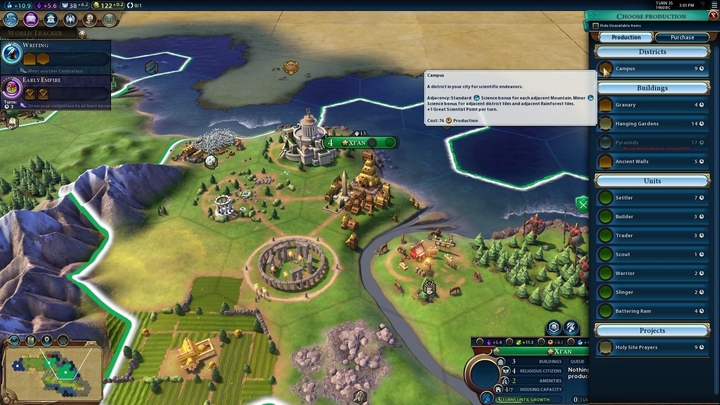
I was unable to experience warring against other nations. My armies only neutralized a couple of bandit camps. Among the new features there’s supposedly an option to combine troops into formations, but I couldn’t test that either – I’m not sure whether that was because I needed a specific technology to do that, or because the feature simply hadn’t been implemented into the game yet.
New old Civilization
Do I have any reservations? Yes. There’s still many things that need improvement – I’ve seen many temporary graphics, and the units were sometimes slow to follow commands. Considering that the release date is drawing near, concerns about whether the devs will be able to finish everything in time seem to be justified. Another thing is that we actually still don’t know much about the game itself. I really liked what I’ve seen so far, but will the whole game will be equally good? I, for one, definitely hope so.
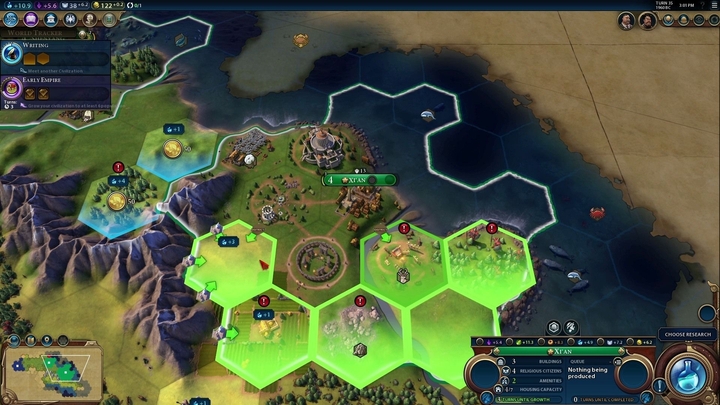
I must admit that at first I was a bit of a doubting Thomas – I had to see the game with my own eyes to believe it could really be a successful production. Prior to this event, I had only seen a couple of screenshots and some scarce information, hence I wasn’t incredibly optimistic. Fortunately, seeing the game managed to change this: the sixth installment is still the Civilization we love. On the other hand, it’s also pretty innovative and full of interesting solutions which introduce new depth into the gameplay. At the same time it seems to be approachable for the new players as well as complex and challenging for the veterans. Obviously, It’s hard to really assess the game after only sixty turns, but I’ve gotten a good taste of what Firaxis has got brewing for us, and we can really hope for the best Civilization ever, with much stronger foundations than the last time.
